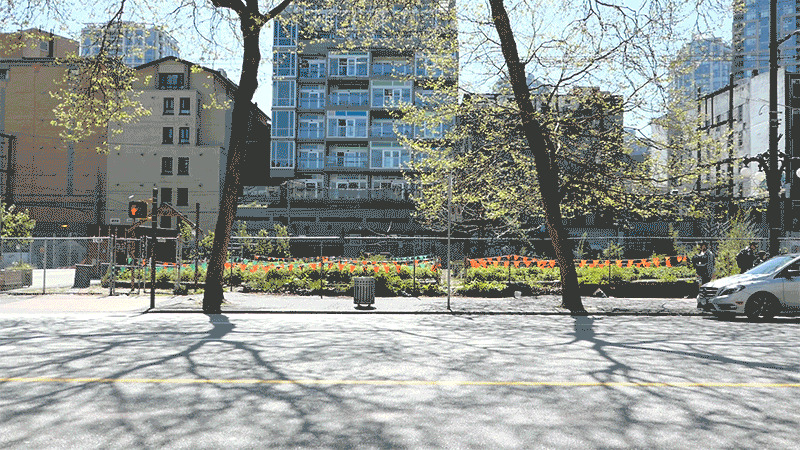Urban Farms, Land Use and Soil Contamination
Urban farming offers cities both economic and social benefits. With increasing populations migrating to urban centres, the development of sustainable, secure foods sources is a boon, however the potential for soil contamination is a barrier.

Peering in through the chain link fence at Easting Hasting Urban Fam in Vancouver you can see neat rows of raised bed planters overflowing with greenery. On the day I walked by, there was no one tending the garden but it looked well cared for and clean. Located on the notorious East Hasting street and juxtaposed by old bars, run down hotels, hip coffee shops and a freshly painted mural on an adjacent building, the garden offers a new kind of urban aesthetic and land use in an area known for its crime and homelessness. The urban farm project was started in 2012 on the site of a former gravel parking lot with the mission to provide meaningful work and volunteer opportunities grounded in the idea of food security.
The slow food, local food and urban food movements, among others, have brought agricultural production to the forefront in urban centres. Development of community and commercial scale farms have raised new possibilities in utilizing underdeveloped, blighted or abandoned urban areas. Up until the pre-industrial era, most cities around the world including the global North were characterized by a closed loop ecology where wastes were used as input for food production. That system changed with rapid urbanization and the post-industrial revolution and the subsequent division of land uses. The resulting stratified urban form created a separation between urban and rural, with the latter being the sole source of food production. In recent years policy makers, urban planners and environmental activists have recognized the value of urban agriculture for its contribution to economic development, food security and public health and are promoting it in cities around the world.

There is however a stigma around food production in urban areas, particularly in, or adjacent to, industrial districts. The wholesome, unpolluted, nourishing ideal of the rural farm does not translate well to urban areas such as the Vancouver East Side. Anthropogenic activities such as commercial industry, vehicular traffic, fuel combustion and waste disposal have likely resulted in soil contamination in areas suitable for urban agricultural use. Therefore, before advancing any urban agriculture enterprise, either commercial or non-profit, the perception of contamination is often the most serious stumbling block.
Fortunately, there has been lots of research, policy work and guidelines developed for remediating contaminated urban soil for urban agricultural purposes. The US EPA has numerous guides including reusing potentially contaminated site, agriculture on brownfield sites and evaluating soil suitability for urban agriculture. Some cities have developed their own guidelines including Vancouver, Toronto and Boston. Other cities including Calgary are in the process of developing guidelines to coincide with one of the first commercial urban farms. The Urban Commercial Agriculture Pilot Project will develop an inner-city lot located in the historically industrial area of Alyth Bonnybrook/Manchester.
Urban agriculture offers cities both economic and social benefits. With increasing populations migrating to urban centers, the need for sustainable, secure foods sources has become more important. Re-purposing abandoned commercial or industrial land for productive purposes makes urban agriculture a compelling choice in promoting local food production. However, the perceived risks of soil contamination have left businesses and policy makers hesitant of such land use changes. Providing public awareness and basic knowledge of contamination risks and cost-effective remediation options remains a key factor in utilizing urban land for agricultural purposes.